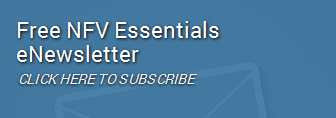OPNFV Creates End User Advisory Group
Whenever there is a technology that gets labeled as “The Next Big Thing!” there is always a reason to question the validity of the claim. Indeed, it is one of the reasons for the popularity over the years of the Gartner Group’s hype cycle. That said, a leading metric for how much traffic something new that is heralded as being “transformative,” “revolutionary” or a “paradigm shift” is based literally and figuratively on the old saying of being known by “the company you keep.”
A great example of this in the Network Functions Virtualization (NFV) community was the announcement by the OPNFV Project—the collaborative project of the Linux Foundation aimed at defining a carrier-grade, integrated, open source flexible platform intended to accelerate the introduction of new products and services using NFV—of the formation of the End User Advisory Group (EUAG).
This EUAG consists of end-user organizations from both OPNFV members and nonmembers. It was created to provide a forum for end users to assist and support the project’s objectives by providing technical and strategic guidance to the OPNFV governing bodies (including the Technical Steering Committee (TSC), the Board of Directors and the Certification & Compliance Committee).
A quick look shows that the EUAG is comprised of members experienced in running some of the world’s most cutting-edge networks. It is a “Who’s Who” of industry players and recognized experts. It makes you want to sit on the meetings for the networking alone.
EUAG founding members include:
- AT&T’s Toby Ford, assistant vice president of Cloud Infrastructure and Platform Architecture and Strategy; Bryan Sullivan, director of Open Source Strategy; and Steven Wright, lead member of Technical Staff
- British Telecom’s Milind Bhagwat, enterprise architect and technology strategy lead
- CableLabs’ Don Clarke, principal network architect; Randy Levensalor, lead software architect; and Tetsuya Nakamura, principal systems architect
- China Mobile’s Lingli Deng, project manager
- China Unicom’s Chuan Jia and Junjie Tong from the Network Technology Research Institute of China Unicom, Department of Network Technology Research
- Cox Communications’ Guy Meador, senior strategic architect; and Jeff Finkelstein, executive director of Advanced Access Architecture
- Deutsche Telekom’s Herbert Damker, senior expert, Group Technology
- Fidelity Investment’s Carlos Matos, director of global network architecture
- Liberty Global’s Uzari Firoze, manager, Business-to-Business Network Design
- KDDI’s Hajime Miyamoto, senior engineer and Kenichi Ogaki, assistant manager
- KDDI Lab’s Masanori Miyazawa, research manager
- Orange's Morgan Richomme, NFV architect
- SK Telecom’s Jong Han Park, head of 5G Tech Lab, Network Technology R&D Center
- Sprint’s Serge Manning, senior technology strategist, Global Standards
- Telecom Italia’s Cecilia Corbi, standardization manager
- Telefonica’s Diego Lopez, senior technology expert
- Telia Company’s Johan Gustawsson, network architect, SDN and NFV
- Vodafone Group’s David Amzallag, group head of Network Virtualization, SDN and NFV; and Kodi Atuchukwu, network virtualisation architect, Vodafone Ocean
“The formation of the OPNFV EUAG will harness the knowledge and expertise of those responsible for actually running real-world networks as they deploy and scale,” said Heather Kirksey, director, OPNFV. “Feedback from the ecosystem using and deploying NFV is crucial to the future direction of OPNFV. Engaging these pioneers will help us address the most pressing pain points for the industry and build a platform with broad applicability.”
The EUAG, which meets monthly to discuss key challenges, standards, network architecture and emerging use cases related to NFV, held its first meeting June 26, 2016. The next is scheduled for August 31. The group is chaired by AT&T’s Steven Wright who commented that, “AT&T values the industry interoperability efforts pioneered by OPNFV to enable a VNF ecosystem...We are excited to be more active in this community by contributing code directly and with vendors.”
Needless to say, other founding members were equally as effusive in their excitement about the creation of the EUAG for obvious and important reasons. The common themes are one that should resonate with everyone. The EUAB, in its capacity as hands-on advisors to the OPNVF Project, want to assure the effort remains open source and interoperable as communications infrastructures by their very nature are heterogeneous “E”vironments. In fact, as I have noted many times previously, open source now must translate in perfect alignment with being “open for business.” In addition, while competition between solution providers and between service providers is critical for financial reasons, all boats do rise when the tide comes in. Therefore, being able to leverage the wisdom of the crowd is important, as is making sure a lack of interoperability does not become a stumbling block to accelerating the process of concept to cash in developing and implementing NFV.
Interested in learning more? Details on the OPNFV EUAG can be found here, including the group’s Wiki page, official Charter and Member Agreement. It is also important to note that EUAG meeting minutes are public and posted to the EUAG wiki page. And, you are also invited to visit the group’s home page user-advisory@opnfv.org, at any time to find out how to become a member.
Edited by Alicia Young

 By
By 
